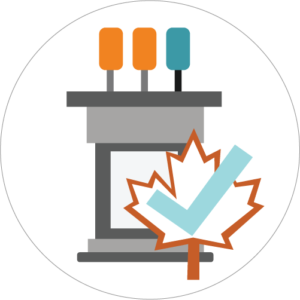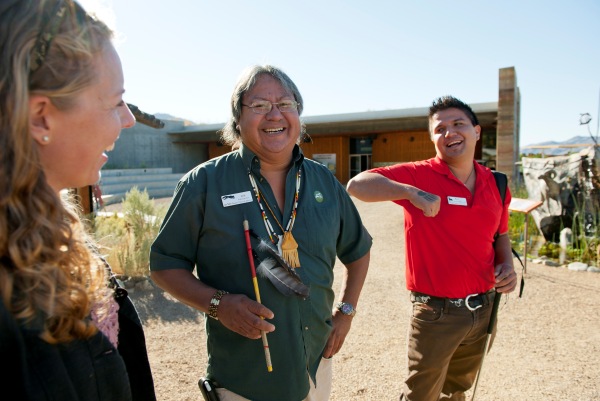 Tourism HR Canada was invited as a witness to the Standing Committee on Finance, on April 8, to discuss COVID-19. The Panel on Tourism and Hospitality also included statements by the Tourism Industry Association of Canada, the Hotel Association of Canada, the Indigenous Tourism Association of Canada—each represented on Tourism HR Canada’s Board of Directors—and others.
Tourism HR Canada was invited as a witness to the Standing Committee on Finance, on April 8, to discuss COVID-19. The Panel on Tourism and Hospitality also included statements by the Tourism Industry Association of Canada, the Hotel Association of Canada, the Indigenous Tourism Association of Canada—each represented on Tourism HR Canada’s Board of Directors—and others.
Philip Mondor, Tourism HR Canada President and CEO, provided insights on the current impact of COVID-19 on the tourism workforce. Here is his statement made to the Parliamentary Committee:
There are 750,000 jobs directly attributed to revenues derived from tourists; this accounts for 2% of GDP. These jobs would not exist if it were not for the visitor economy.
Many tourism businesses also receive significant revenues from Canadian residents, which supports additional employment. When we measure everyone working in the tourism sector, we employ 1.8 million Canadians, and when we consider all economic activity in tourism industries, we contribute 5.1% to Canada’s GDP. (The five industries that make up the tourism sector are: Accommodations, Food & Beverage Services, Recreation & Entertainment, Transportation, and Travel Services.)
Three weeks ago, Tourism HR Canada did the first forecasting of job losses due to COVID-19. This was estimated at a minimum of 360,000 (an optimistic projection) and potentially as high as 770,000 (based on a metric of 70% revenue loss). If you add the moratorium on hiring students or casual labour for the sector during its peak season, another 215,000 to 230,000 will not get tourism jobs. And, normally, there is an increase in hours for permanent staff during this season. This, too, will not be realized.
Current evidence suggests the job losses in this short term are approaching one million workers. For example:
- Restaurants Canada estimated that 1.2 million individuals will lose jobs in the foodservice industry, and two weeks ago reported that 800,000 workers were already laid off.
- The Hotel Association of Canada estimated a 250,000 job loss, with 153,000 in Ontario and Quebec, and another 68,000 in British Columbia.
Over the past two weeks, increasing job losses are being reported. Although the measurement metrics are different, and these figures refer to different timeframes and scenarios, the story is the same: the tourism sector has been hit hard, with large-scale layoffs. This is true across Canada, affecting more than 10% of the labour market.
New data from the Conference Board of Canada suggests 2.8 million jobs lost across the economy for March and April alone. Looking at what is attributed to tourism, the losses account for 840,000 jobs, which is slightly higher than our original projections for the same period. The longer the disruption, the great the job loss will be.
Tourism’s job losses were immediate, as companies faced liquidity issues, especially since the shock was instantaneous. Most of these job losses were with hourly wage earners, and it impacted all five industries that make up the tourism sector (F&B and Accommodations were the most affected).
With recent announcements on wage subsidies and the ongoing adjustments to the Canadian Emergency Response Benefit (CERB), we can expect that some job recovery will occur. But lag and uncertainty about recovery time means that employers are also encouraging workers to seek the benefit while they try to stabilize their businesses. We expect that it will be upward of 24 months before employment stabilizes in the sector.
Due to the economic impact on people’s discretionary spending, the Conference Board does not expect spending on recreation/culture to return to normal until October 2021. Consumer spending on accommodation and food services will not likely return until December 2021 or early 2022.
We need to get businesses focused on workforce recovery initiatives. This is hard to do while they still grapple with liquidity, but it will be a growing concern. Recovery is dependent on the ability of companies to quickly gear up and adjust to the new reality. It’s about skills—first and foremost, ones that help employers to retool and train to focus on the domestic market, to rebuild financial reserves, and to develop new business models with lower overhead and increased margins. Workforce recovery is all about being a resilient workforce that is more versatile. The bottom line: investment in training and retention programs is essential. Evidence from past economic recovery events assert that the sooner investments are made in the training and retention of the workforce, the quicker the rebound. It a new business environment—one that requires improved resilience to fare future disruptions. People need to be retrained or upskilled to be prepared.
The CERB programs announced to date are great, but not enough to support the demands on recovery that will ultimately get people employed more rapidly and get the economy moving again. Speaking strictly from a workforce or labour perspective, we encourage the Government of Canada to act soon on funding to support training and helping businesses retool so they can successfully recover. The pre-election budget last year mentioned $1.7 billion over five years to create a tax credit and pay for dedicated time off for workers to take skills training. Perhaps this is worth revisiting.
Finally, the industry appreciates the great efforts that the Canadian government has undertaken to respond to the COVID crisis. We’d like to extend a special thank you for the great work by public servants, who have been exceptional in helping us respond the needs of tourism employers and other stakeholders.
A full recording of this Standing Committee on Finance meeting is available online: listen here.

